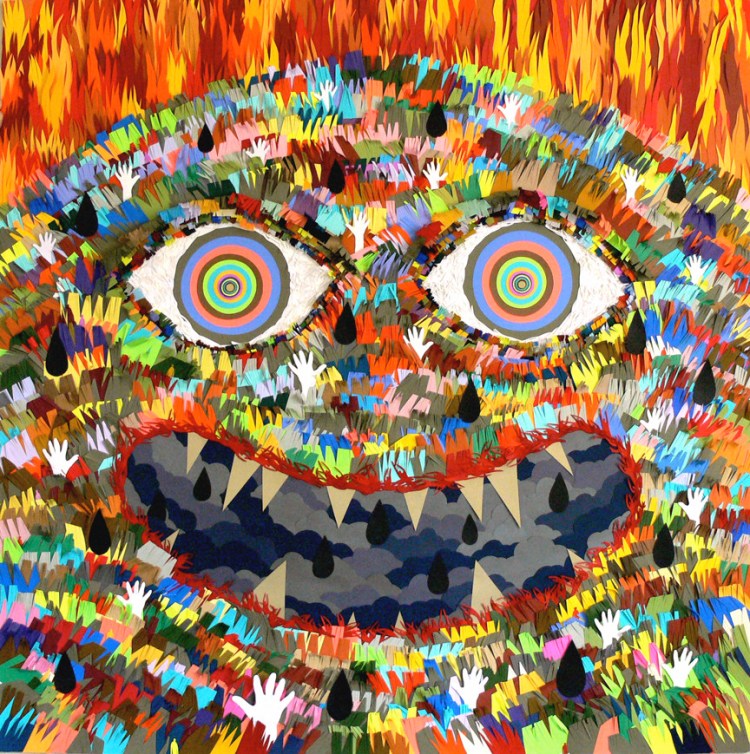Everywhere you go now, people feel like they’re on the mend.
After more than a year of watching COVID-19 shut the world down and shut people in their homes, we’re all getting out and feeling a little better about things. Some of the pain of isolation and loss is ending.
Though planning began before the pandemic, the Portland-based Illustration Institute’s current exhibit “The Art of Mending” seems appropriate for this moment in time. It’s currently on view at the Brick Store Museum in Kennebunk, through August. Beyond the work of professional artists, it features everyday things people have mended or repaired over the years. There are more than 100 pieces total on display.
Some of the actual mended things on display – lent by community members – include stuffed animals, a couch, bowls, a knife, tools, shoes and many others.
The exhibit features works of art that reflect on three kinds of mending: practical mending or restoring of an object, the aesthetic mending that comes from art that has a healing effect, and cultural mending or art that engages the community in a conversation about healing.
Given the range of ideas about mending the organizers wanted to include, the artworks range widely, too. Artist and photographer Joshua Dixon, who studied at Maine College of Art, was attacked by two pit bulls when he was 8 years old and has undergone 59 surgeries to reconstruct his face. He has poignant photos of himself in the exhibit.
“I am cathartically releasing my emotions; to create an empathic space where I and the audience can develop conversations regarding our society,” he wrote in his artist statement for the exhibit.
Artist Michael Velliquette created a colorful, exuberant creature out of cut paper figures, some shaped like hands. The artist’s statement says that in the piece “the notion of ‘mending’ manifests through the emotional catharsis of the figures’ gestures and expressions – whereby the release of strong emotion can have healing and restorative effects.”
Painter Edith Vonnegut, daughter of writer Kurt Vonnegut, has done paintings of various essential workers, the folks who kept clocking in when the world shut down. These include a postal worker and store clerk.
“My aim these days is to portray essential frontline workers with all the importance and majesty that was bestowed upon kings and queens and world leaders,” Vonnegut wrote in an artist’s statement for the exhibit. “I frankly think none of the former deserved majestic representation.”

Three paintings of essential workers by Edith Vonnegut, part of “The Art of Mending” exhibit. Photo by Edith Vonnegut
Send questions/comments to the editors.




Comments are no longer available on this story